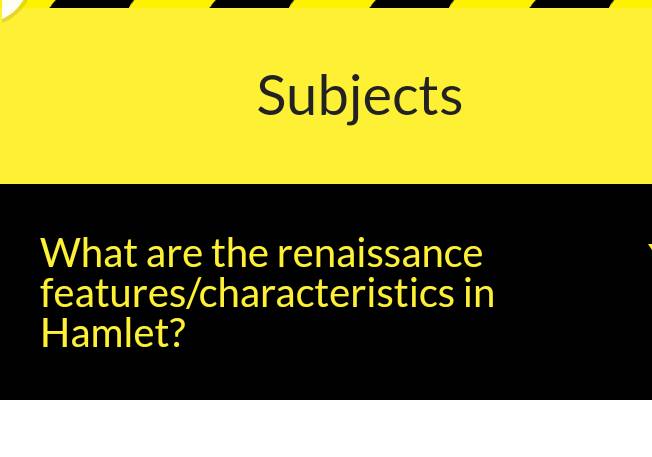THE RENAISSANCE
What are the renaissance features/characteristics in Hamlet?
The word renaissance literally means "rebirth." In the context of the English Renaissance, this rebirth refers to a renewal of learning, especially in terms of new beliefs and ways of doing things differently from the Middle Ages. Characteristics of the Renaissance include a renewed interest in classical antiquity; a rise in humanist philosophy (a belief in self, human worth, and individual dignity); and radical changes in ideas about religion, politics, and science.
Here are some examples of how these characteristics are illustrated in Hamlet:
Classic antiquity: Hamlet has lots of references to classical Greek and Roman stories, characters, and historical events. For example, you can find a murderous king (Pyrrhus), and a queen in mourning over her murdered husband (Hecuba), which mirror the main plot points of the play.
Humanist philosophy: In Act II, Scene 2, Line 311, Hamlet asks: "What a piece of work is a man, how noble in reason, how infinite in faculties..." In this speech, you can see a clear assertion of humanist ideas about the uniqueness and extraordinary abilities of the human mind.
Religion: In Hamlet's most famous soliloquy, which begins, "To be or not to be...", he alludes to an unknown afterlife, "The undiscovered country...," which is a stark departure from Medieval religious ideas rooted in a strict belief that people either go to heaven or hell when they die.
Politics: There were big political changes taking place during the time that Shakespeare wrote Hamlet. This is reflected in the play by Hamlet's questioning of Claudius's right to ascend to the throne in his father's place. It was a new idea to question anything having to do with the "natural" hierarchical structures that maintained political power.
Science: This point is illustrated by Shakespeare's use of the play-within-the play in Hamlet. Here, Prince Hamlet's play, The Mousetrap, is presented to the court supposedly as entertainment, but Hamlet's intent is to gather obvious evidence of Claudius's guilt for the murder of his father. Says Hamlet: "...the play's the thing Wherein I'll catch the conscience of the king."


